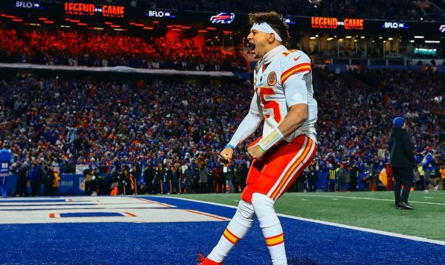Early Career Strategies of Aaron Rodgers: Developing his Reputation as a Cerebral Quarterback
When Aaron Rodgers entered the NFL as the 24th overall pick in the 2005 NFL Draft, he did so knowing he would be sitting behind future Hall of Famer Brett Favre on the Green Bay Packers depth chart. While this presented Rodgers with the opportunity to learn from one of the game’s all-time greats, it also meant he would need to be patient and wait for his chance to start. During his first three seasons in Green Bay, Rodgers focused on developing his mental game and honing strategies that would allow him to avoid mistakes when his number was eventually called. Through meticulous film study, mastery of the Packers’ complex schemes, building chemistry with his teammates, and learning from Favre’s example, Rodgers quietly worked to establish a reputation as a cerebral quarterback who minimized risk.
One key strategy Rodgers likely emphasized early on was minimizing risk by prioritizing throws with a high chance of completion, even if it resulted in shorter gains. As a young quarterback trying to earn the trust of his coaches and cement his place as the future starter, Rodgers understood the importance of protecting the ball and avoiding costly turnovers that could lose games for his team. By taking the safe option over the big play when possible, Rodgers limited interceptions and fumbles that might have undermined his development. Completing a short five-yard pass on third down is far better for the team and the quarterback’s confidence than an ill-advised deep shot that ends in a pick. Rodgers’ ability to make smart decisions and live to fight another down served as the foundation for his cerebral approach.
Another strategy Rodgers almost certainly invested significant time in was studying opposing defenses in order to identify weaknesses and exploit them precisely. As the backup, Rodgers had ample opportunity during the week to pore over film and analyze how different schemes operated. He looked for tells in coverage, blitz packages, and tendencies that might reveal opportunities for big gains. By thoroughly understanding what a defense was trying to do, Rodgers positioned himself to find and attack vulnerabilities with well-placed throws. This allowed him to move the ball downfield successfully without taking undue risks. It’s easy to imagine Rodgers spent countless extra hours in meeting rooms dissecting defenses so he would be fully prepared when his number was called on Sundays.
Mastering Mike McCarthy’s complex offensive system was also critical for Rodgers as he waited for his chance. The Packers are known for their pre-snap motions, shifts, and route combinations that can confuse defenses, but also require the quarterback to be completely dialed into protections, hot routes, and progression reads. Rodgers made the most of his backup reps in practice to gain an encyclopedic knowledge of Green Bay’s playbook and the nuanced decisions required at the line of scrimmage. Comfort operating within such a sophisticated scheme gave Rodgers confidence that when he stepped in, he could run the offense efficiently without having to think through each play call. His mastery allowed him to focus on executing against the defense rather than sorting through his own system.
In addition to studying film, another important element of Rodgers’ early development was building chemistry with his receivers through extra practice time together. Rodgers worked diligently with players like Donald Driver and Greg Jennings to understand their individual strengths, preferred routes, and ways to anticipate their breaks for perfectly placed throws. While chemistry takes time on the field, Rodgers gave himself a head start through additional 7-on-7 work and discussions about coverages. Developing strong rapport with his targets prior to becoming the starter helped Rodgers feel comfortable letting it fly into tight windows without worrying about miscommunications. His receivers knew where the ball needed to be, building the trust required for success.
Perhaps the most valuable resource available to Rodgers as a young quarterback was Hall of Famer Brett Favre. While their styles differed greatly as passers, Rodgers made it a priority to study Favre’s approach and glean what he could from a competitor who had started over 250 straight games. Rodgers paid attention to how Favre dissected defenses at the line of scrimmage, managed risks and rewards on different down and distances, and led the team in clutch situations. He also observed Favre’s legendary work ethic and dedication to film study. Rodgers incorporated mental lessons like focusing on reads, protecting the ball, and making smart decisions under pressure. While Rodgers’ physical talents allowed for a different style of play, the cerebral examples set by Favre served as a blueprint for handling the pressures of the quarterback position that has paid dividends throughout Rodgers’ career.
Through strategies like minimizing risks, thoroughly understanding opponents, mastering Green Bay’s complex schemes, developing chemistry with his targets, and learning from the veteran starter in front of him, Aaron Rodgers quietly established himself as a cerebral quarterback with a reputation for avoiding costly mistakes early in his career. While he waited patiently for his opportunity to start, Rodgers focused on developing his mental approach to give himself the best chance for success. Those formative years served Rodgers well, as evidenced by his immediate production and accuracy when finally given the reins in Green Bay. Rodgers’ cerebral style, built through strategic development as a backup, has continued to define his Hall of Fame caliber career.



